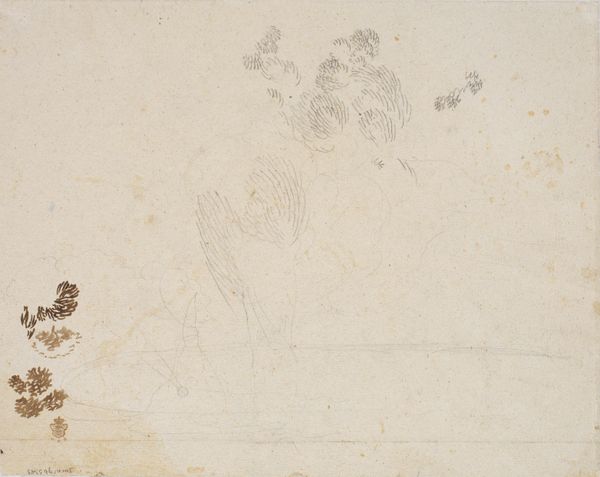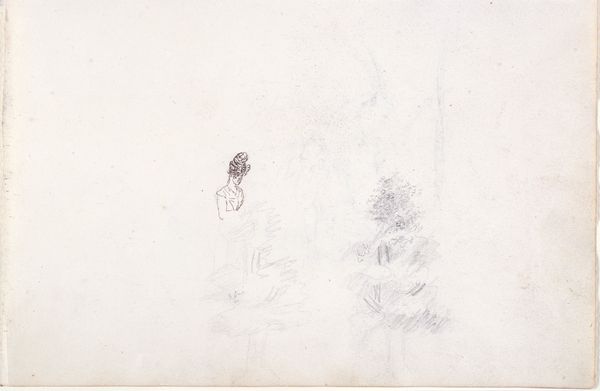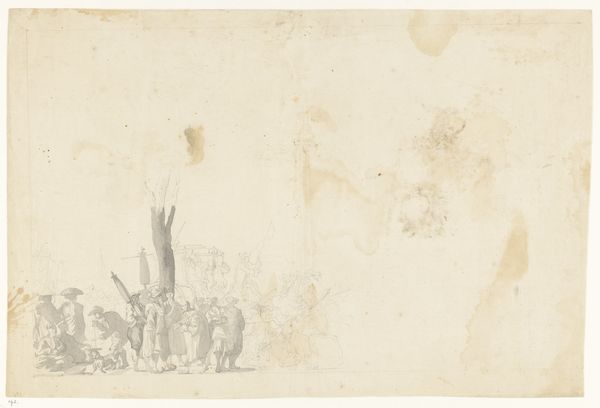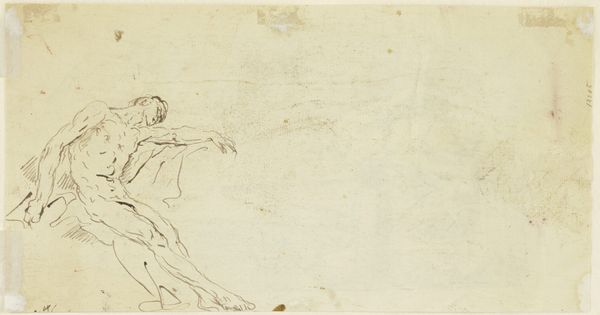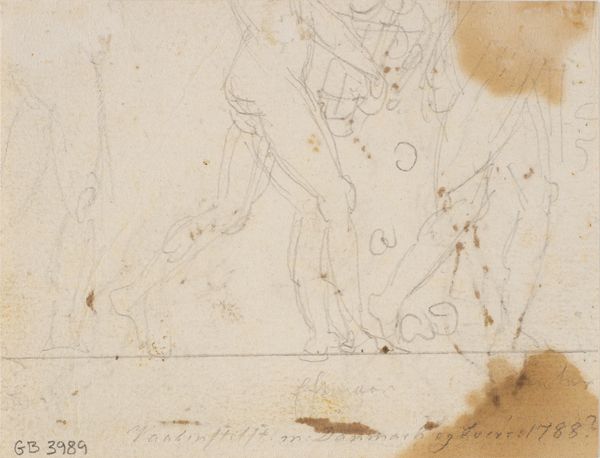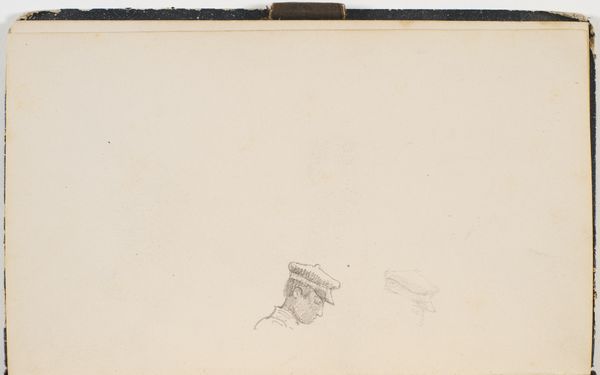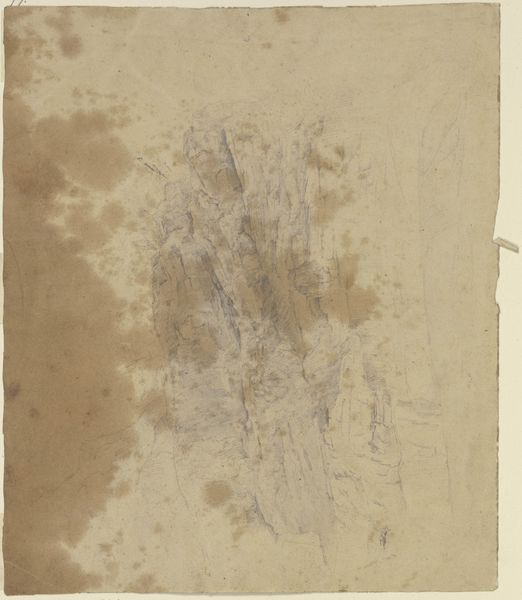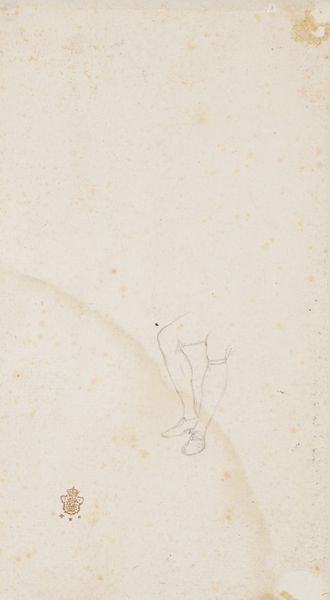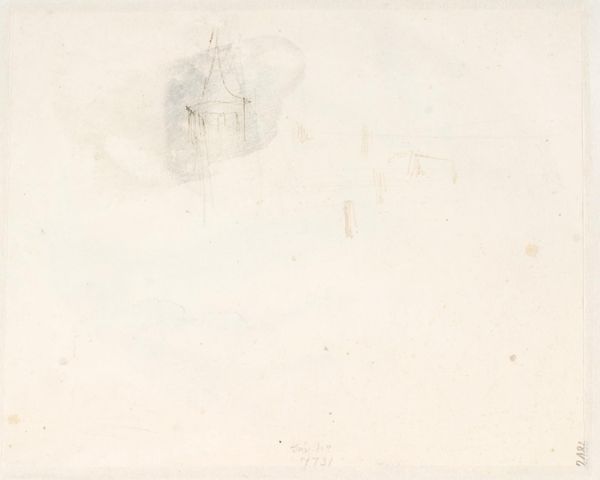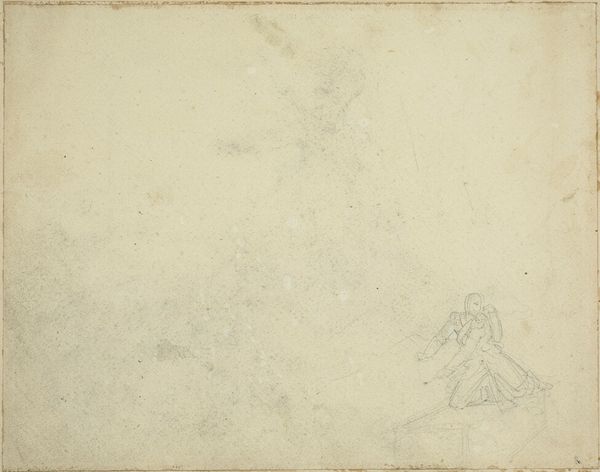
drawing, pencil
#
portrait
#
drawing
#
figuration
#
romanticism
#
pencil
Dimensions: 141 mm (height) x 235 mm (width) (bladmaal)
Editor: We are looking at "Blyantsrids af dansende kvinde", a pencil drawing by Martinus Rørbye, from 1832. It's part of the collection at the SMK. I’m struck by how spare it is. Just a few lines to suggest a figure. What do you see in this piece, especially concerning its visual composition? Curator: Indeed. It is spare. I’m particularly drawn to the artist’s use of line. Observe how Rørbye uses varying pressure to create a sense of depth and movement with an economy of means. The sketch prioritizes form, depicting not a specific likeness but rather the essence of dance. Consider the rhythmic, almost calligraphic quality of the marks – they are like a visual score. What effect does this reduction have, would you say? Editor: I suppose it draws attention to the form of the dancer itself, and the technique. It isn't about anything but the act of creation. I was just reading something where the Romanticists had a real appreciation of this simplicity of nature too. Do you think there's any correlation? Curator: That is insightful. Romanticism, with its focus on the sublime, did value unmediated experiences of the world, which could relate to a stripped-down visual language that tries to capture the bare minimum needed for recognizability, focusing instead on shape and form. It highlights the power of suggestion over detailed description, evoking the feeling of dance rather than replicating it exactly. Editor: I can appreciate that focus much more now that you mention the use of pressure and essence of form; that makes so much sense! Curator: Absolutely. Hopefully, it encourages a closer looking to how artists distill essence.
Comments
No comments
Be the first to comment and join the conversation on the ultimate creative platform.
